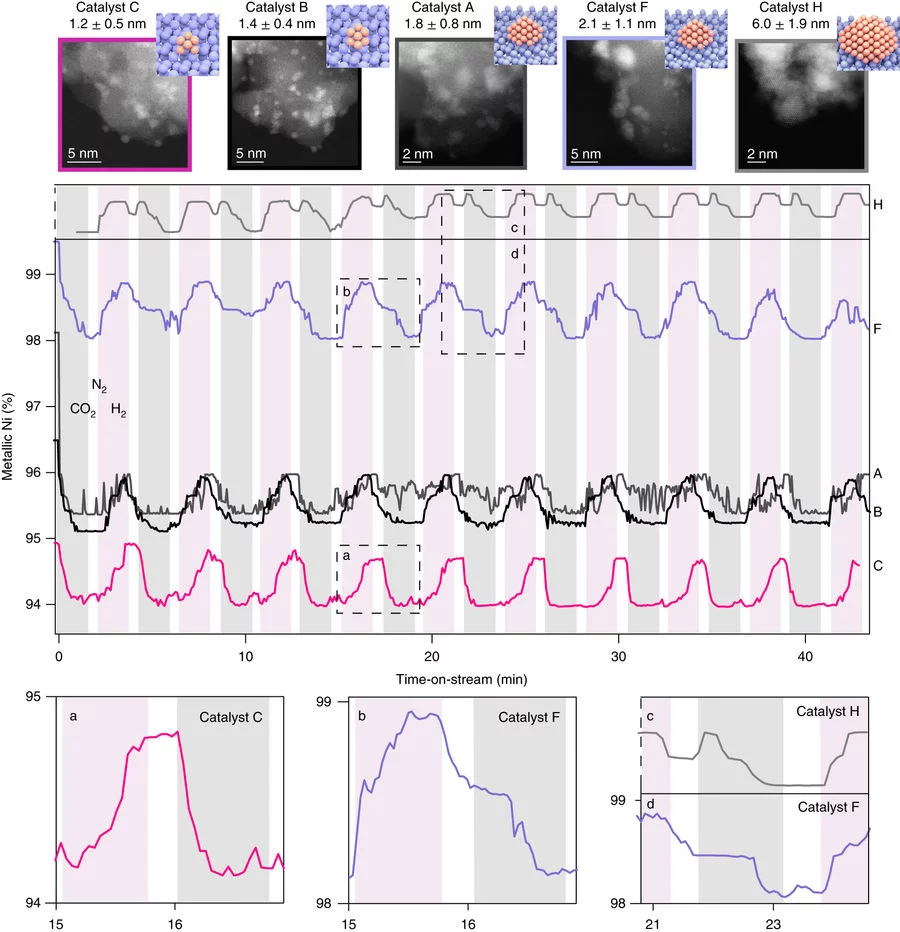Continuous efforts in the field of materials science have allowed us to generate smaller and smaller metal nanoparticles, creating new opportunities to understand catalytic properties that depend on the metal particle size. Structure sensitivity is the phenomenon where not all surface atoms in a supported metal catalyst have the same activity. Understanding structure sensitivity can assist in the rational design of catalysts, allowing control over mechanisms, activity and selectivity, and thus even the viability of a catalytic reaction. Here, using a unique set of well-defined silica-supported Ni nanoclusters (1–7 nm) and advanced characterization methods, we prove how structure sensitivity influences the mechanism of catalytic CO2 reduction, the nature of which has been long debated. These findings bring fundamental new understanding of CO2 hydrogenation over Ni and allow us to control both activity and selectivity, which can be a means for CO2 emission abatement through its valorization as a low- or even negative-cost feedstock on a low-cost transition-metal catalyst.
Additional information
Link to the media releaseContact
Dr Maarten NachtegaalSuperXAS beamline
Laboratory for Synchrotron Radiation and Femtochemistry (LSF)
Swiss Light Source, Paul Scherrer Intitute
5232 Villigen-PSI, Switzerland
Telephone: +41 56 310 30 56
E-mail: marten.nachtegaal@psi.ch
Original Publication
Unravelling structure sensitivity in CO2 hydrogenation over nickelCharlotte Vogt, Esther Groeneveld, Gerda Kamsma, Maarten Nachtegaal, Li Lu, Christopher J. Kiely, Peter H. Berben, Florian Meirer and Bert M. WeckhuysenAuthors
Nature Catalysis, 29 January 2018
DOI: 10.1038/s41929-017-0016-y
